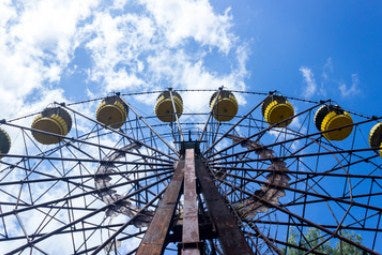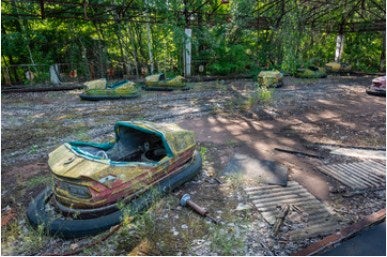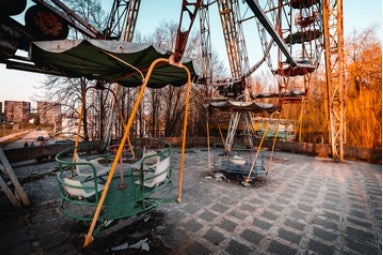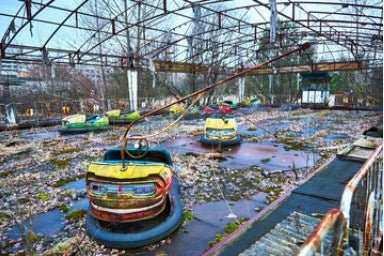Keeping Your Family Safe In An Amusement Park
Visiting an Amusement Park?
A visit to a fair or an amusement park is something to which the whole family looks forward. It can be great fun, a wonderful opportunity for the family to bond, and also create many wonderful memories to cherish for a lifetime. Unfortunately, theme parks can often be quite dangerous and numerous incidents have been reported that have resulted in visitors sustaining serious injuries with some cases even resulting in death. As grim as it may seem, amusement park accidents are on the rise. Among the many reasons for this to happen, one of the most plausible is that the owners or operators of the theme park do not emphasize safety aspects. The sorry state of affairs is compounded by the fact that currently, there are no federal safety regulations applicable to amusement parks or theme parks. While in some states and municipalities, these parks need to obtain clearance certificates based on strict inspection of the applicable safety codes, the tragedy is that accidents continue to take place quite regularly.

Amusement Ride-Related Injuries in the United States
The statistics of amusement park-related injuries make for really ugly reading. During the period 1990-2010, there were 4,423 injuries every year averagely in America’s theme parks. Of these injuries, over 70% took place during the period May through September – the busy summer months that see a larger number of visitors averaged 20 injuries daily. According to a report published by the International Association of Amusement Parks and Attractions in 2014, theme park accidents in the period 2003 – 2014 were estimated to be over 18,000. The two main reasons for the increasing number of amusement park accidents are defective products and negligence.
Amusement Park Negligence Caused by Negligence
Negligence is the most obvious legal claim if the accident in the amusement park is caused by factors like inattention or carelessness by the theme park’s employees. As per the standard procedure of a negligence claim, the plaintiff has the responsibility of proving that the defendant was required by law to be reasonably careful, that the defendant failed to fulfill the requirement, and it was this failure to exercise proper and adequate care that caused the injury sustained by the plaintiff.
As per law, amusement parks need to be responsible for the actions of their employees. This means that in case, the negligence by a theme park employee leads to an accident, the amusement park, being the employer, will be held liable for the accident and can be accordingly sued in a court of law.

An act of negligence by the park or any of its employees include acts of omission and commission, which means that the park can be held responsible for something that was done or not done. Typical examples of negligence by amusement parks include:
- Not posting warning signs that are clear and specific about the hazard, for example, some rides may not be safe for those with high blood pressure or heart problems
- Not posting an adequate number of signs warning riders/visitors of the risks involved
- Not providing adequate and appropriate training to the ride operators
- Not inspecting the ride regularly to find out their condition
- Not maintaining safety equipment adequately
- Not operating a ride properly, i.e. rides may start or stop with excessive force or speed too much
- Not providing the correct instructions for safe riding to riders
Product Liability
In addition to the improper or inadequate inspection, maintenance, use, or operation of the rides, certain theme park accidents are also caused by defects in the products used to provide the rides or their components. For example, a defect in the lap bar design may result in it becoming unlatched while the ride is in progress and cause the rider to fall and sustain an injury that causes pain and distress or even, in some tragic case, death. In case, it is proven that there was a design or a structural defect in the ride that led to the accident and the consequent injury, the manufacturer of the ride or the component may be sued for product liability. To be successful in obtaining compensation, the plaintiff will have to prove that there was indeed a defect in the design or manufacture of the equipment, part, component, or structure that was responsible for the accident, which was the specific cause of the rider’s injury or death.

Premises Liability
In addition to product liability claims, any person who is injured in an amusement park can choose to sue the park authorities for personal injury arising out of premises liability. The term “premises liability” refers to the laws that determine whose fault it is and who is liable for any condition or use of the property that has resulted in an accidental injury. The term premises or property includes land, buildings, rides, activities, and all other general conditions of the amusement park.
Despite the variation of laws in different states, premises liability, in general, three distinct types of entrants on the property – licensees, invitees, and trespassers. This distinction also defines the different degrees of care that the property owner is responsible for each type of entrant. However, some states make no distinction between the entrant types and apply the rule that the amusement park owner is duty-bound to make the premises reasonably safe and secure for everyone accessing it.
Duty of Care
In the matter of theme park accidents, the duty of care applies to many other aspects of the park over and above the rides. The owner of the theme park is tasked with the responsibility of keeping the grounds of the amusement park free from dangers that may not be obvious to the visitors. He has to fix the hazards appropriately so that they no longer can be construed as hazards. When a remedial measure is not possible or adequate for any reason, he has the duty of putting up warning signs that are clearly visible to the visitors in sufficient numbers so that they catch the attention of all visitors who are likely to be in danger. Typical remedial actions against hidden dangers include erecting railings on the sides of steep stairs, cleaning up of food and drink spilled on surfaces accessed by visitors, putting up signs warning of slippery surfaces, heated surfaces, etc. However, if the hazard is obvious and there is no risk of any person failing to notice it under any circumstances, there is no necessity of the amusement park owner to warn visitors.

Just like any other business, the defendant owning or operating the amusement park is also liable for acts of negligence by its employees this includes failure to exercise proper control and restraint over animals used in shows, inability to control the crowd properly as well as others discussed earlier.
A lawsuit arising out of an amusement park employee’s negligence may or may not be treated as a case of premises liability by the court. However, since premises liability is a form of negligence, the plaintiff will be required to establish that a duty was owed to him by the amusement park and the failure to carry out the duty has resulted in the injury.
Suing an Amusement Park for a Personal Injury
If you or a loved one has been involved in an amusement park accident that has resulted in an injury, you may be able to pursue a claim for compensation in a court of law. However, seeking the assistance of a competent personal injury lawyer is essential since the successful outcome depends on being able to identify who is the responsible party and fixing liability against him.
To ensure that your rights are protected and your best interests are looked after, you should contact us at Lavalle, Brown & Ronan, P.A., among the most experienced personal injury law firms in Boca Raton. Possessing more than 130 years of accumulated personal injury litigation experience, our attorneys have both the skills and the competence to assist you to meet your legal needs. Call us today for a free consultation!
